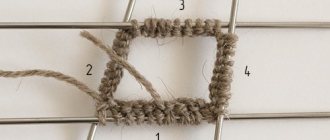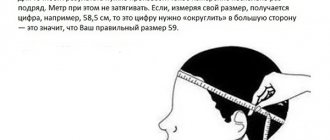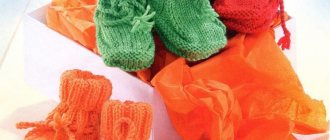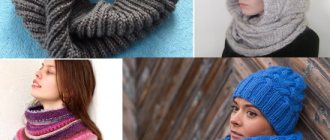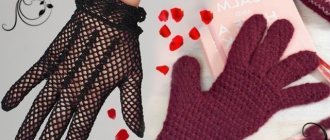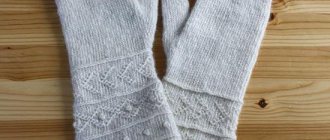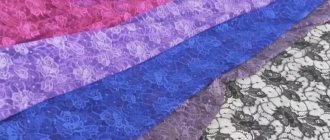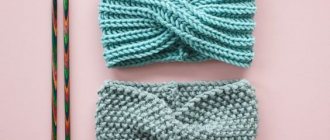Greetings to lovers and connoisseurs of hand knitting! Glad to meet you on the “Irena Handmade” website page!
Do you want to knit a bright, memorable product? Use this gorgeous faux braid pattern.
The site already has two articles on knitting socks using a similar pattern: with 32 stitches for kids, and for adults with 64.
And I also assume that regular readers remember that on the page of the VKontakte group “Irena Handmade - knitting and crocheting” we held a “collaboration” on knitting this product.
The results were great. Everyone learned something new for themselves. And since everyone’s yarn was of the most varied texture and color, we were convinced that the pattern was beautiful in threads of any composition. In combination with the delicate shades of the yarn, each of your products has received a special charm.
At the same time, the need arose to calculate circuits for several sizes. I've been planning to do this for a long time. Today the project is ready. I propose drawing eight patterns for circular knitting at once.
Knitting socks, beautiful patterns
Socks are a traditional, affordable item of clothing that you can make yourself by knitting them using knitting needles. It would seem, how can you decorate knitted socks so that they are the most beautiful? There are many options - these include classic braids, and the presence of openwork jacquard patterns of different configurations, not only for adults, but also for children. Let's look at the original patterns below and learn how to knit socks with beautiful patterns. Let's make sure that they can be used not only in dress fabric or when designing a sweater.
Knitting socks - several suitable patterns
Today, socks can be decorated with any patterns you like, sew on a balabon, symmetrically divide the color scheme, and also apply other ideas, including your own imagination, or by watching a video on the Internet. As a result, needlewomen receive warm, original socks with an element of openwork or other decors.
When knitting socks with knitting needles, it is possible to use various patterns. Today their availability on the Internet is great and there can be no problems with this. The most beautiful patterns and patterns are provided below.
The main thing is to learn how to correctly knit the main elements of this item - the heels and toes.
So, in order to knit the warmest and most beautiful socks, you need to build on your own skills, choose the appropriate yarn, the purpose and appearance of the future item.
Jacquard patterns - beautiful patterns
Jacquard is considered a classic, which is certainly in demand in the winter. But knitting them is a bit related to options with particularly complex ideas:
- you have to work synchronously with threads of different colors;
- you need to learn how to change them in a timely manner;
- create the correct thread tension;
- observe the required knitting density.
The optimal solution in the arrangement of jacquard motifs is stripes with patterns. They can be placed on the cuffs and on that section of the sock panel that is intended for decoration of this place.
- To knit openwork socks for children, which are completely covered with a colored pattern, you need to repeat the selected pattern one by one, and so on until the item is completely ready.
- The ornament can be alternated with several rows knitted only with facial loops, a single-color thread or other simple patterns. Schemes of the original ornaments are shown in the photo below:
Knitting socks - options for placing a pattern in the sock fabric
There are some options for the distribution of the pattern on the knitted fabric of the sock; they differ in the complexity and speed of the work. Thanks to them, needlewomen create many incredibly beautiful models, including openwork ones:
- ornaments occupying the entire panel;
- patterns on cuffs;
- ornaments for children in the form of elongated stripes.
When knitting socks using knitting needles, the main thing is to choose the appropriate pattern and the most beautiful patterns.
Beginner knitters will do better with simple patterns that illustrate elements with a narrow longitudinal report. The vertical pattern will succinctly fit it into the fabric of the sock itself. The report, which is arranged in a checkerboard pattern, is more complex, and often the craftswomen get confused when calculating the loops where the heel begins to be knitted. This option can be used when decorating an even cuff when knitting socks for children. So, we looked at the topic: “Knitting socks, beautiful patterns” and a training video, now you can try to master this type of needlework yourself using a simple example. Source
Source: https://svoimi.rukami.klubokidei.com/1036258441799142150/vyazanie-noskov-spitsami-krasivye-uzory/
Video tutorials: how to knit socks
Beautiful knitted socks are a great gift, so if you want to learn how to knit, be sure to do it. Beginners are advised to take a closer look at the following diagram.
A more stylish version of women's socks is with a pigtail pattern at the top.
Beautiful tri-color socks can be knitted in one day.
Children's socks and booties are a more difficult task, so it is better to start knitting after you have made several pairs for adults and studied the pattern.
Share with your friends!
- 258
- 21
- 41
- 320
Shared
Subscribe to our Yandex.Zen channel or Yandex.Messenger
Knitting socks with a pattern: patterns with descriptions
The times when jacquard patterns, braids and flowers could only be seen on a sweater are long gone. Today they are successfully used when knitting even the simplest clothes - socks. In this case, you can decorate both the cuffs of the product and the entire fabric. We will talk about ways to knit patterned socks, and patterns and descriptions are included.
To knit socks, you don’t need to have any special work experience or skill, because even children at school are among the first to learn this product during labor lessons. Therefore, there is no point in focusing on details. Let's better talk about ornaments, and it is worth noting that there are quite a lot of options.
When choosing a knitting pattern, each needlewoman is based on her experience, the availability of materials and the further purpose of the socks. Regarding the last point, two points should be taken into account:
- If you plan to wear knitted socks under your shoes in winter, then you need to choose a tight pattern, without small holes or broaches.
- When knitted socks are intended to play the role of a decorative element in home clothes, they can be made with thin threads, and the pattern can be chosen to be openwork.
There are several options for where to knit the ornament:
- as a decorative cuff;
- knit a pattern throughout the product;
- in the form of a ribbon of braids, petals and other things in the center of the sock.
Schemes for decorating cuffs are considered the simplest to implement, and even a novice craftswoman can master them. Since the upper part of the sock is a solid canvas, there is no need to add loops or make decreases, and absolutely all designs are suitable for decoration. For example, a knitted top with a rollback looks very nice.
The option in which the upper part of the sock, from the elastic band to the heel, is tied with braids, ribbons or strands looks very original. Due to the unique shape of the pattern and the different directions of the pattern, such socks visually add volume to the leg.
Classic decorative techniques are not inferior in the leadership of patterns for socks. Thus, ordinary plaits and intertwined braids, made horizontally relative to the cuff, add charm and charm to the finished product.
The best possible solution is to place the pattern in the center of the sock.
You will be able to knit socks without spending too much time fiddling with patterns, since often all patterns are presented in the form of longitudinal stripes.
You can form the pattern immediately after finishing work on the elastic band or from the first row of the cuff. It's up to you to decide what will look best. And for inspiration, we offer this example of a longitudinal ornament.
Even if you haven’t found a design that’s right for you, you can depict any pattern in your arsenal on your socks. Review your old knitting patterns for sweaters, hats, jackets, perhaps that’s where you’ll find that perfect pattern.
Tall socks with owl pattern
Patterns and descriptions of openwork socks with knitting needles are considered the most difficult to execute. To create such a piece of clothing, you will have to practice a little and get used to changing patterns correctly. In addition, the skills of decreasing, dividing and increasing loops will be very useful.
If you decide to knit socks with a pattern all over the fabric, be prepared in advance for the fact that throughout the entire work you need to carefully monitor the loops and count them correctly.
Openwork socks with knitting needles: patterns and patterns for knitting socks, interesting ideas:
Most likely, knitting will never go out of style. And all because it allows you to perform an original thing and have a good time.
However, becoming a professional knitter is not as easy as it seems at first glance. But you can still achieve what you want. The main thing is to do what you love and master new technologies without giving up or losing heart.
In this article we will tell the reader how to knit openwork socks.
Matching threads and knitting needles
The most important thing to do before starting any product is to prepare materials and tools. Professional knitters advise when choosing yarn to give preference to cotton and not very thick ones. Knitting needles are needed for hosiery. It is important to select them based on the thickness of the thread. Ideally, they should be one and a half times thicker.
In addition, it is very important to take the pattern into account. After all, the openwork will be lost if it is made with gradient, variegated or shaggy threads. It is also not recommended to use very thick wool yarn. After all, lace products are designed to be light and almost airy. This is important to consider at the preparatory stage. This is the only way to create very beautiful openwork socks with knitting needles.
Taking measurements from the leg
The next stage involves simple steps. You just need to prepare a piece of paper, paper and a soft centimeter. Unless, of course, the reader has a ready-made knitted sock of the required size. If you still had to measure your foot, you should determine the following parameters:
- girth of the base of the lower leg - A;
- heel height (from the floor to the base of the shin) - B;
- foot length - B;
- lifting height - G.
Calculation of loops and rows
To correctly convert centimeters into loops and rows, you need to knit a sample of the pattern chosen for openwork socks. It is important to use the knitting needles and yarn that are intended for the intended product.
Otherwise, actions will be meaningless. You should not make a sample that is too large. A square with a side of 10 cm is enough. After this, we count the number of loops and rows, divide the two values by ten.
Thus, we manage to find out two parameters:
- D - number of loops in one centimeter;
- E is the number of rows in one centimeter.
Now all we have to do is multiply these values by the measurements taken, and then start knitting.
Sock knitting technology
Having prepared a set of hosiery knitting needles (preferably metal ones) and suitable yarn, we proceed to making openwork socks:
- We use only two knitting needles at once. We cast on the required number of loops: multiply parameter D by parameter A.
- Next, we distribute them onto four knitting needles. We use the fifth as a variable.
- We knit, moving in a circle and gradually reaching the desired length of the top of the sock.
- After this, we divide the loops into two parts and begin to knit the heel.
- It's very easy to do. It is necessary, lengthening one part, in each next row to grab one loop from the second part.
- Continue this way until the heel is formed and the two separated parts are reunited.
- Now we begin to knit in the round again, without decreasing or adding anything.
- We multiply parameter E by parameter B to find out how many rows are required for the foot.
- We count them or, if possible, try on an almost finished openwork sock.
- Knitting is carried out until five rows remain until the end.
- Then you should start decreasing the loops so that at the end there are only six left. Calculating the number of extra stitches for each row is very simple. You need to subtract six from the current loops and divide the resulting number by five. As you can see, there is nothing complicated.
- After this, we knit the product to the end, break the thread and pass it through the remaining six loops. Tighten it well, tie it and hide it on the wrong side.
Simple pattern
Openwork socks knitted with knitting needles are becoming more and more popular. And all because they look really original, stylish and unusual. In addition, they are suitable not only for home use. Fashionable people wear them for a walk, a business meeting or a date. However, it is better for beginners not to take on the task of making very beautiful, but also difficult socks. Professional knitters advise to practice on the easy version first. We propose to study it in this paragraph.
The pattern runs from the fingertips through the instep to the shin. The report is nineteen loops horizontally and five vertically. When the knitting needles and knitting threads are ready, we calculate the number of loops to fit the shin. And we begin to knit openwork socks with knitting needles according to the description:
- We pick them up and distribute them onto four hosiery needles.
- First, we knit three rows with purl stitches.
- Then we start making the pattern.
- First row - four purl loops, 2 together, 2 together, yarn over, knit, yarn over, knit, yarn over, knit, yarn over, 2 together, 2 together, purl 4.
- The second and all subsequent even rows are purl. We knit loops in them according to the pattern.
- Third row - purl 3, 2 together, 2 together, purl.
- Fifth row - purl 2, knit 2, knit 2 together, yo, knit, yo, knit 5, yo, knit, yo, 2 together, 2 together, purl two.
- The seventh row is purl, 2 together, 2 together, yo, knit, yo, knit 7, yo, knit, yo, 2 together, 2 together, purl.
- Ninth row - 2 together, 2 together, yarn over, knit, yarn over, knit 9, yarn over, knit, yarn over, 2 together, 2 together.
Master class on making openwork socks
Not everyone succeeds in knitting according to the description - text instructions. It is especially difficult for people who have just mastered the basics of mastery. That's why we offer detailed video instructions. It shows a different pattern. And many may find it very difficult. But this is only at first glance!
A professional knitter films and comments on her every step. Therefore, the work can be done together with it.
Openwork socks according to the pattern
Some knitters find it much easier to navigate by icons. Therefore, we have added graphic instructions to the article for them. It displays a very beautiful, but also complex pattern.
However, if you carefully study the diagram and follow each symbol, you will be able to complete a real masterpiece. Knitting experts advise beginners to decorate the top edge of their socks with an elastic band. You shouldn't make it too wide - it won't be visible.
The most suitable elastic band is 1 x 1. The stitch consists of two loops - knit and purl. They alternate in a row.
Knitting socks: simple and beautiful patterns with descriptions
Perhaps the simplest product that you can knit yourself is socks with knitting needles: diagrams and descriptions are simple and beautiful already on our page, create and be inspired!
Knitted socks in winter are a very important wardrobe item, simply irreplaceable. Warm, soft, cozy, you can knit these socks with your own hands; you just need to put in a little effort and buy good quality yarn.
Warm socks are knitted from wool mixture to make them durable and soft, and synthetic thread is often added to the yarn to strengthen it. We have previously written about what yarn to choose and how to knit socks on 5 knitting needles.
There we also talked about leg measurements, and also showed a video with a detailed description of the knitting process . But step-by-step instructions for knitting socks on two knitting needles await you right now.
https://www.youtube.com/watch?v=2jaDZ36jS5A
In order to knit socks, you need to correctly calculate the size of the future product. The easiest way is to use the following formula: 42:3X2, where 42 is your shoe size. Thus, the foot size will be 28. If you are going to knit socks for children, use this formula or simply measure the child's foot.
- Let's start the process of knitting socks on two knitting needles
- You will need medium size knitting needles and two colors of yarn .
- We cast on 22 loops (we knit children's socks) and then knit a 4 cm 1X1 rib pattern (you will get approximately 14-15 rows).
The next 4 cm are a stockinette stitch pattern . Thus, the back of the sock is ready.
Now we will tell you how to knit the heel of a sock on knitting needles. To do this, you need to gradually decrease by knitting the second and third, as well as the 2 penultimate loops together. to decrease the loops until we get 12 loops on the knitting needles.
At the next stage we will expand the work to enlarge the canvas. We knit one knit stitch from the edge loop at a time, leaving the purl loops without adding. We add knit stitches until 22 stitches are formed on the needles again.
The heel formation is complete.
Next, knitting socks moves on to the next stage - knitting the foot . To do this, you need to knit an 8 cm pattern in stockinette stitch, alternating colors (2 rows in yellow, 2 rows in green).
For the top of the sock we knit 8 cm , while connecting the first and last loops with the edge loops in each front row. Thus, we connect the sole and the top of the sock, giving the product a complete look.
From the front side we knit the cuffs using stockinette stitch, connecting the front and back parts of the sock. To complete the work, knit 4 cm with an elastic band. Using a similar pattern, we knit the second sock.
So we knitted the socks on two knitting needles. If you want to knit openwork socks, we present you a couple of beautiful and fairly simple patterns .
How to knit beautiful men's socks with knitting needles?
Beautiful socks are not just for women's feet. Together with you, we will knit chic and warm men's socks: beautiful patterns and patterns are already waiting in this section. All patterns come with a description where you will find detailed instructions on how to knit the heel and toe of the sock , how to knit socks without a seam and how to finish the work.
Men's socks can also have a beautiful pattern, which will be somewhat more discreet than on women's or children's socks.
Drawings on men's socks are also welcome. And these 3 patterns will help you make socks not only for your man, but for the whole family. Introducing the sock family look : beautiful socks can be tried on by all family members: mom, dad and child.
How to knit the heel of a sock on knitting needles: step-by-step master class
We have already talked about the formation of the heel above, but I would like to spend more time on the process of knitting this important element.
One of the most popular methods of knitting a heel is the boomerang . To learn how to properly use this knitting technique, read the instructions in the photo.
There are various options for knitting heels. Perhaps from such a rich list you can choose a method that suits your liking.
How to knit a straight heel: step-by-step instructions
This type of heel knitting is one of the simplest. The master class will tell you about all the main nuances.
- To work you will need 5 double needles , 4 of which form a square, and the fifth will act as a working needle.
- After knitting the cuff, move on to the heel.
- To knit the heel wall in stockinette stitch, use needles No. 4 and No. 1. The number of rows should be 2 less than the number of stitches cast on.
- We knit the lower part of the heel like this: divide the total number of loops by 3 , if the number is not divisible by three, the middle part will have a larger number of loops, and the same number of loops on the sides (for example, 11+12+11).
- We knit the middle part with satin stitch, the front side with knit stitches, and the back side with purl stitches.
- On the sides we gradually decrease the loops, knitting the outer loops together.
- We knit the lower part as follows: we knit the first row with knit stitches , then in the middle part we knit the last loop together with the knit stitch, which is crossed.
- We unfold the work and knit the second purl row, removing the outer loop as a purl stitch. We purl the middle, and also purl the outermost one from the next row.
- We turn the work over and knit the 3rd row by analogy with the first .
- We knit according to the above pattern until the middle part of the knitting remains.
For a more detailed master class, we invite you to study the video lessons at the end of the section. There you will be able to examine the entire process in detail and correctly complete the work.
From this short instruction you will learn about knitting a circular heel, you will be able to calculate the size of the future product and study in detail how to knit heels.
You will also learn general information about how to knit socks, which thread is best for the job, how to knit in a spiral and how to bind off stitches.
In addition to knitting the heel, the craftswoman should also know about such a process as toe formation. Read, try, learn.
How to knit beautiful patterns with knitting needles for socks?
Socks with a beautiful knitted pattern can become a real work of art; for this you should consider several patterns and popular techniques for knitting socks .
Photo of knitted socks
Read here - Knitting slippers - the best ideas and detailed description of patterns for beginners (110 photos)
Did you like the article?
0
